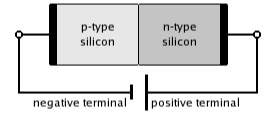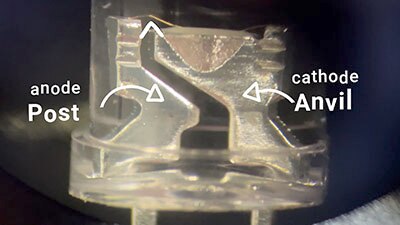Demystifying the Diode
2023-11-24 | By Antonio Velasco
Diodes are one of the foundational components of many electronic circuits, boasting a large variety of applications ranging from logic chips to waveform shaping circuits such as clippers and rectifiers. We can find the mighty diode in devices as small as the transistors in our smartphones all the way up to larger scales in our modern microwave.
So, what exactly is the physics behind these tiny and powerful devices that are responsible for everything from sending breakup texts to warming up last night's leftover food?
It all begins with the P-N Junction. A semiconductor (most commonly Silicon) will be doped unevenly -- The N-side will have more electrons, while the P-side will contain less. The absence of an electron is referred to as a hole. The difference in carriers creates what's called a depletion region between the P-side and the N-side, the depletion region is where all the magical quantum physics occurs that allows us to have the reactions that we take advantage of to build all of our modern devices. Don’t worry though, we don’t need to know quantum mechanics to use a diode on our breadboard!

The important fact to remember is that one side of the junction will have a higher amount of electrical charge than the other. The resultant charge imbalance allows for some pretty unique interactions to occur. In our practical circuits, the application we can focus on is that a certain voltage is required to overcome this difference in electric potential. This difference is denoted as Vd and typically sits around 0.7 Volts. The concept of Vd gives us the ability to add logic to our circuits. It takes a nonzero voltage in order to overcome this barrier, meaning current will not flow until the voltage drop across the diode is higher than Vd. As opposed to the linear behavior described by Ohm's law that most resistors abide by, diodes abide by more nonlinear principles as highlighted below. This property affords us the advantage of thresholding. Thresholding is super useful as we can use it to permit exclusively signals with a higher voltage than whatever the determined Vd is of the given diode.

We can even put several of these diodes in series to increase Vd and have a higher threshold. With a diode of any given Vd_1, n diodes chained in series will yield a schematically equivalent diode that has a Vd_new = n*Vd_1. Similarly, we can perform operations in parallel to effectively generate a lower Vd_new.
Another uniqueness of diodes is that they have a preferred direction. It has an anode and cathode. Electrons can only flow into the anode (negative terminal) and out of the cathode (positive terminal) but classical diodes do not allow the reverse interaction to occur. This behavior is easily and conveniently extrapolated through the circuit symbol seen below that is commonly used for diodes. The arrow points in the direction in which conventional current flows. Zener diodes are an exception to this rule, but they have slightly different physical characteristics and do not fall into the scope of this particular article.

At the end of the day, the unique physical properties of diodes allow them to be utilized as logical gates that only let higher signals or voltages through, on top of their ability to regulate the direction in which current flows. Stay tuned for a later article that demonstrates how the later property is instrumental in controlling AC current and modulating between analog and digital signals.
Have questions or comments? Continue the conversation on TechForum, DigiKey's online community and technical resource.








 中国
中国